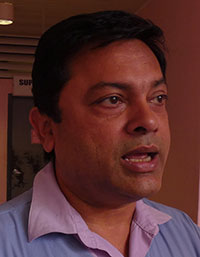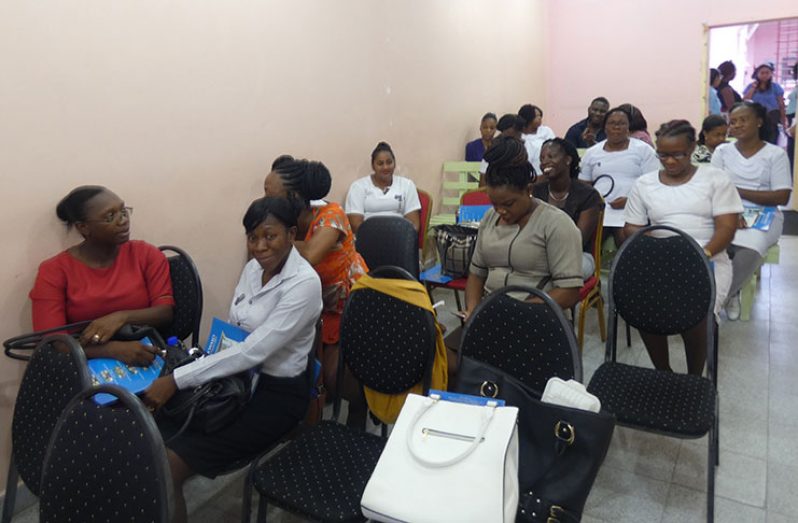THE Public Health Ministry is conducting an obstetric haemorrhaging training programme geared towards achieving zero maternal death at the Linden Hospital Complex (LHC). The three-day training session is being facilitated by Dr. Narine Singh, a Ministry of Public Health (MoPH)Obstetrics and Gynaecology (OB-GYN) training facilitator. Some 25 medical practitioners are participating in the training.

These include midwives, OB-GYN doctors and consultants, registered nurses, maternity unit and antenatal clinic staff and Community Health Workers (CHW). These participants are based not only at the LHC, but from the Upper Demerara Hospital, the Kwakwani Hospital, the Ituni Health Centre and the other community antenatal clinics.
The ‘Zero Maternal Death’ training was an initiative started by the Pan American Health Organization (PAHO) and, last year, it was adapted by the MoPH. Obstetric haemorrhaging is one of the main causes of maternal deaths and Dr Singh explained that it is something that the public health sector has been battling with for some time.
“Obstetric haemorrhaging is the number one cause of maternal death, something that we have been struggling to deal with, and so this training is specifically to train our health care providers like our OB-GYN staff, who deal with delivery… it is a specialised training for these workers,” he said.
The aim is to equip the participants with the knowledge and skills needed to prevent mortality by effectively managing haemorrhaging situations. CHW from the outlying communities are included because they are deemed the first responders to situations of haemorrhaging and will now be equipped with the knowledge to quickly identify patients at risk of bleeding complications.
The MoPH is introducing the use of anti-shock garment, according to Dr Singh. “This is a specific piece of equipment we can use when the patient is bleeding and help them to stabilise the patient. This was a piece of equipment donated by PAHO and given to all of the hospital birthing centres in the country, so that if there is a need to transfer the patient, we can use this anti-shock garment so that the patient can be stabilised until the patient meets somewhere they can be managed more effectively,” Dr Singh explained.
The MoPH plans to train everyone in the health system before incorporating it into the curriculum at the nursing school, Midwifery School, Medics training programme and residency programme, among others. To ensure that the training is fruitful, strict monitoring of how maternal cases are dealt with will be done. Monitoring will also include recording and evaluating ‘near misses’ since this can enable the practitioners to ascertain what should be done in similar cases.
“We can learn from maternal deaths and where we can do better, but ‘near misses’ can also provide some information as to what we did well, what we didn’t do well, what we need to improve and so we have started recording ‘near misses’ now, as one of the new statistics. Maternal deaths is just the tip of the iceberg, a lot of patients had a lot of complications but made it out,” he related.
The ‘Zero Maternal Death’ training programme has been conducted in all administrative regions except Region Eight. Approximately 135 medical practitioners have participated thus far. The LHC has a very good track record of zero maternal death, with only one recorded over the last 10 years.



.jpg)









